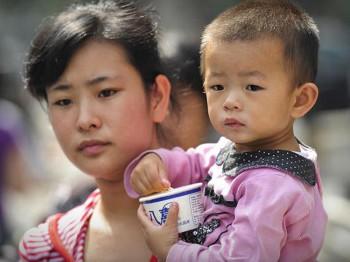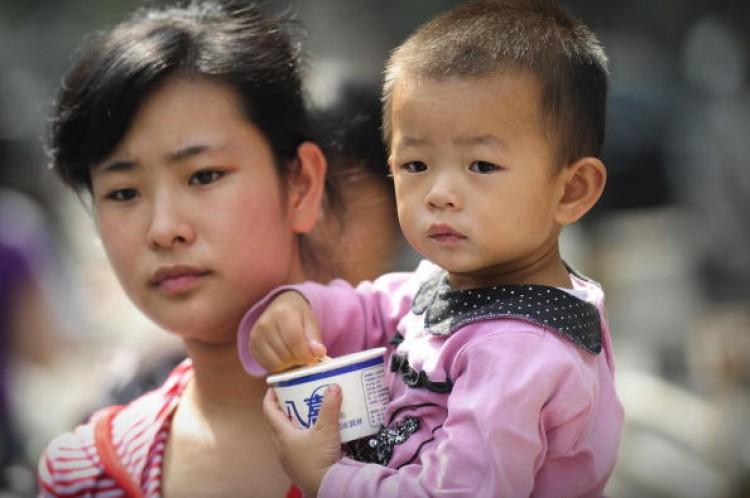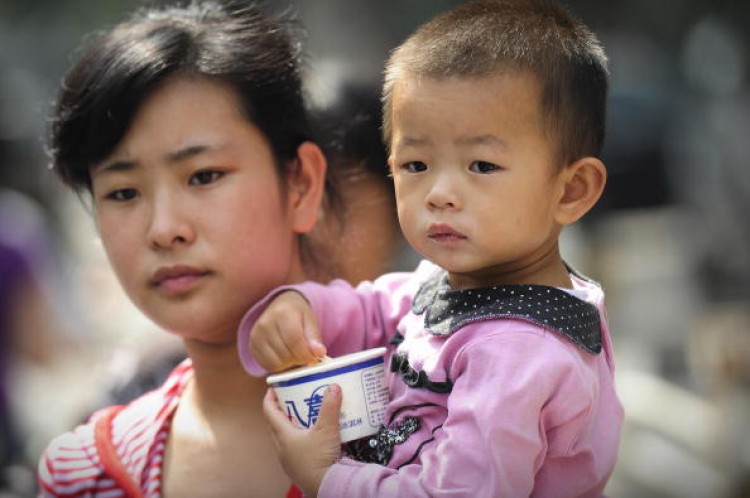Consumers in China have lost trust in the domestic milk industry and in rapidly growing numbers prefer to pay more for imported milk powder than to drink fresh Chinese milk. But even as consumers are spurning domestically produced milk, authorities have lowered the standards for milk production.
China’s milk industry took a hit in 2008 when domestically produced milk was discovered to be tainted with melamine. Melamine was added to milk by dairy farmers the Chinese describe as “black-hearted.” The chemical gives a false, inflated reading in the milk’s protein level, making milk production more profitable. But melamine damages the kidneys. At least six infants died and hundreds of thousands of babies were said to have been harmed. The state prohibited parents from assembling any independent list of those injured by the melamine-tainted milk and parents who sought to collect information were punished.
In 2010, many families reported babies undergoing precocious puberty, and all these babies had consumed Shengyuan milk powder, a popular brand in China. In addition, corruption was uncovered in the quality control of milk products.
The results of this record of poisonous products, lack of transparency, and corrupt management are not surprising: consumers are turning their backs on the domestic milk industry.
According to the statistical data released on Sept. 15, by the China International Dairy Trade Fair the quantity of milk powder imported into China has increased dramatically since 2008, with the move to foreign milk products steadily accelerating, even though the imported milk powder is more expensive than domestically produced milk.
According to the data, in 2008 140,000 tons of milk powder were imported to China. Imports increased to 310,000 tons in 2009, a 121 percent increase over the previous year. In 2010, imports increased to 480,000 tons, a 55 percent increase over 2009. The quantity of milk powder imported in the first half of 2011 has already exceeded the total quantity of imported milk powder for 2009.
Despite the domestic dairy industry rapidly losing market share, the safety standards for China’s milk products have worsened.
In 1986, the standard for the minimum content of protein in fresh milk received from cow farms had to be 2.95 grams per 100 grams and the requirement of maximum number for total bacterial content in milk was 500,000 per milliliter.
According to new standards implemented in June 2010, the minimum protein content in fresh milk received from farms has been lowered to 2.80 grams from 2.95 grams, and the allowable limit of bacteria has now increased to two million per milliliter.
By contrast, in New Zealand the minimum requirement for protein content in milk is 3.8 grams per 100 grams. In North America and in most countries in Europe the protein content in milk is required to be more than 3.2 grams per 100 grams.
Wang Dingmian, Chairman of the Guangzhou Dairy Industry Association said in June that with the increase of the permissible level for bacterial content in fresh milk to two million per millimeter China has the worst standards in the world, which is a shame.
Nan Qingxian, professor at China Agriculture University and the executive director of the China Milk Industry Association told China Economic Weekly, “What I cannot understand is that through 25 years of development, technical skills are improved, and people’s economic situation and quality of life are better than before, yet how can we lower the standard to such a level? Simply from the numbers, one can see that it is even worse than what it was 25 years ago.”
Guo Bengheng, president of Bright Diary said that China not only has the worst standard for “total bacteria” and “protein content” in raw milk, but also “makes no requirement” for the level of certain elements such as antibiotics and nitrite in milk.
Read the original Chinese article.
[email protected]
China’s Consumers Fleeing Domestically Produced Milk
Consumers in China have lost trust in the domestic milk industry and in rapidly growing numbers prefer to pay more for imported milk powder than to drink fresh Chinese milk.

By Jenny Yang
9/25/2011
Updated: 10/1/2015




Friends Read Free